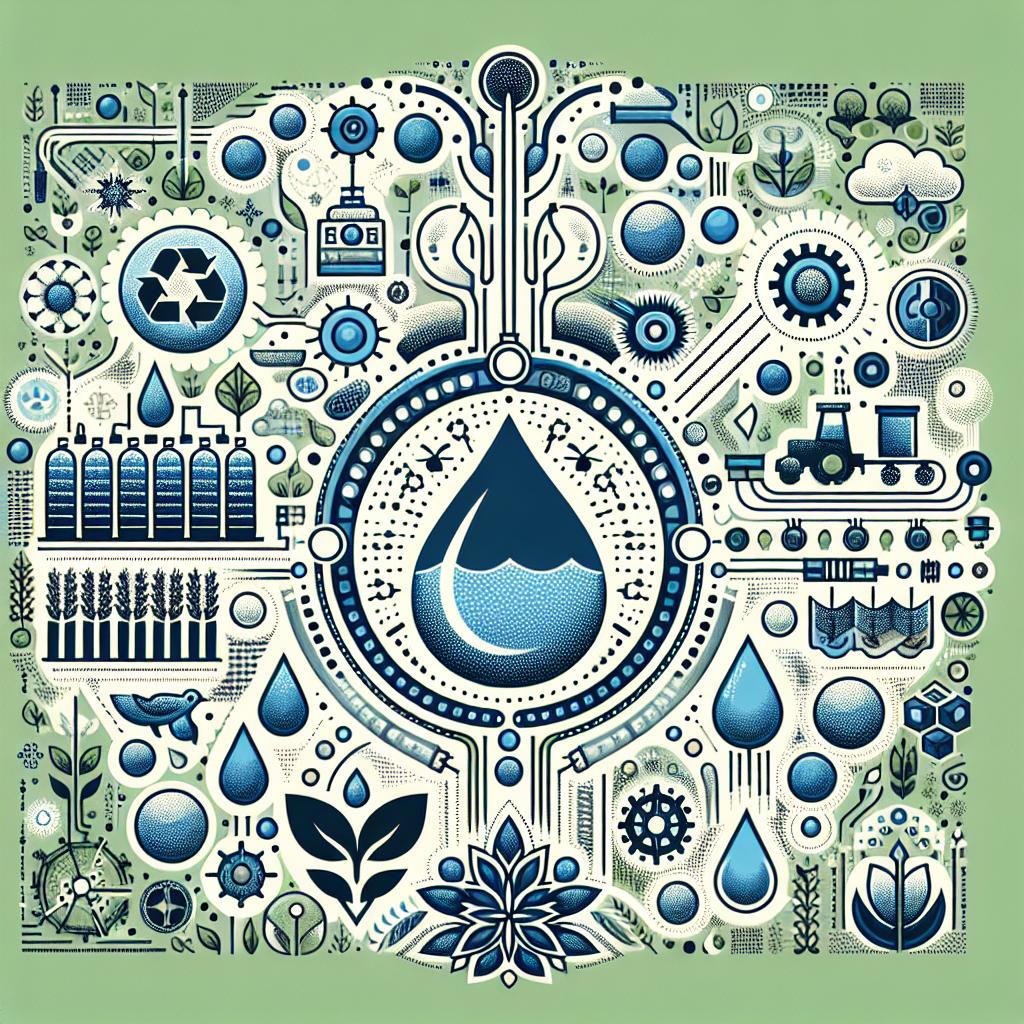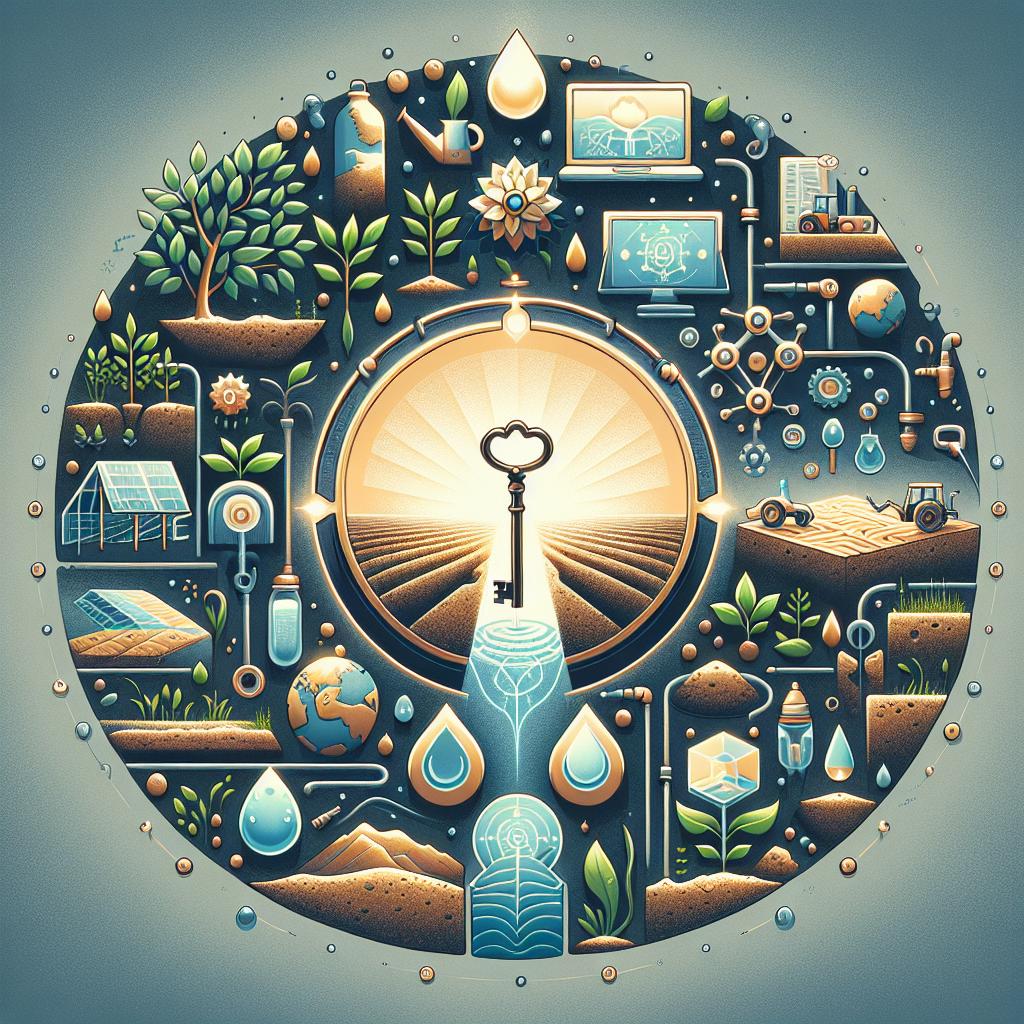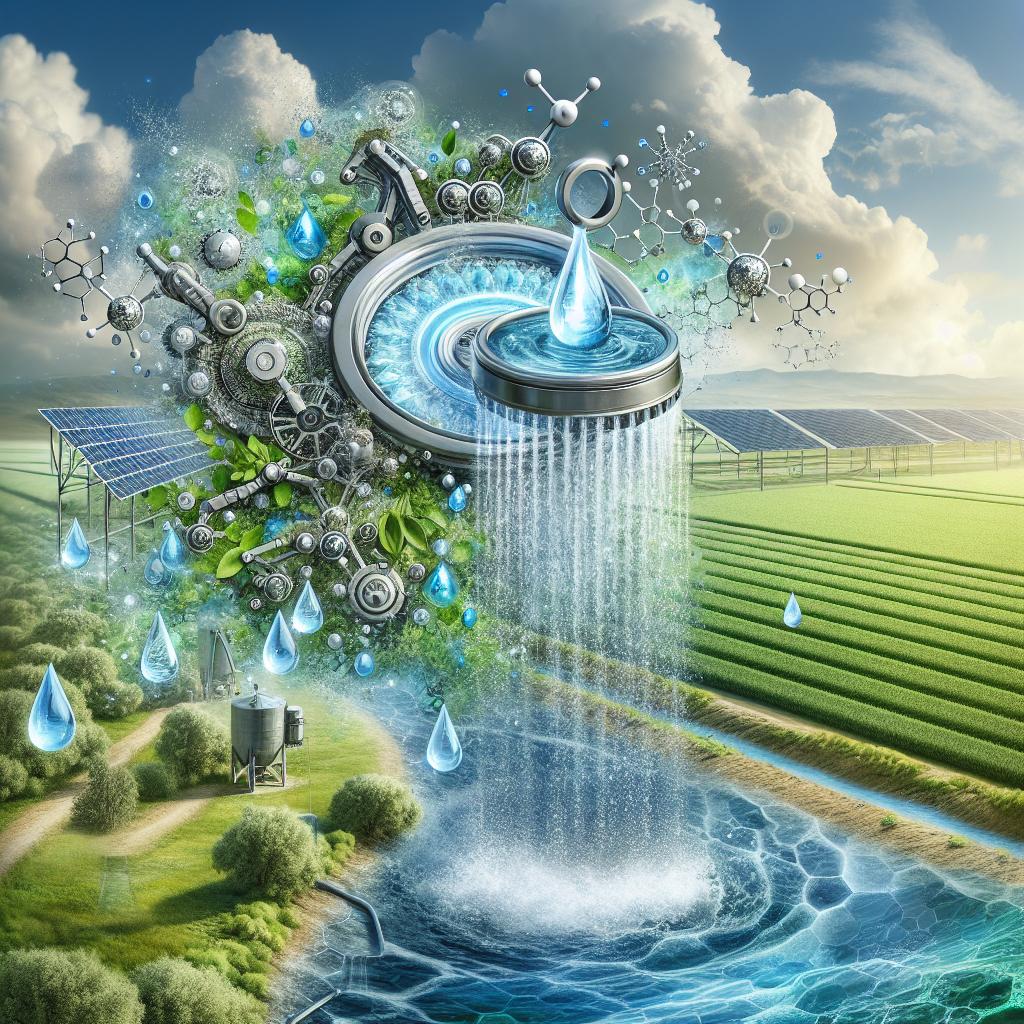This post may contain affiliate links which means I may receive a commission for purchases made through links. Learn more on my Private Policy page.
Exploring Alternative Water Sources for Irrigation: A Splash of Innovation in Farming
In a world where the rhythm of the seasons is as unpredictable as a game of chance, farmers are on a quest for reliable resources to nurture their crops. Water, the lifeblood of agriculture, becomes a scarce treasure, especially in regions where drought reigns or where traditional sources are dwindling. But what if we told you that nature holds a cache of alternative water sources just waiting to be discovered? From rainwater harvesting to innovative wastewater recycling, the possibilities are as vast as the fields themselves. Join us on this refreshing journey as we dive into the ocean of creativity bubbling beneath the surface, exploring how farmers are embracing alternative water solutions to sustain their harvests and protect our precious ecosystems. Let’s make a splash together in the world of sustainable irrigation!
Rethinking Rain: Harnessing Rainwater Harvesting Techniques for Sustainable Irrigation
As the world’s climate evolves, the challenge of maintaining sustainable agricultural practices has never been more pressing. Rainwater harvesting offers an innovative solution to this pressing issue by capturing and storing the precipitation that falls on our fields. By implementing simple yet effective techniques, farmers can significantly enhance their irrigation methods, reduce reliance on conventional water resources, and promote biodiversity. Some key approaches to consider include:
- Rooftop Rainwater Collection: Utilizing buildings to direct rainwater into storage tanks.
- Surface Runoff Channels: Creating simple ditches or trenches that guide rainwater to plants.
- Rain Gardens: Landscaping designed to allow rainwater to be absorbed and utilized by native plants.
Integrating these practices not only increases the availability of water during drier seasons but also helps lower the risk of soil erosion and contributes to groundwater recharge. When implemented alongside traditional irrigation methods, these techniques forge a harmonious balance between the need for agricultural productivity and environmental conservation. Moreover, communities can foster resilience against climate change, showcasing an admirable commitment to sustainable development. To illustrate the potential impact of rainwater harvesting, the following table summarizes the key benefits:
| Benefit | Description |
|---|---|
| Water Conservation | Reduces dependency on local water sources. |
| Cost-Effective | Lowers irrigation costs over time. |
| Eco-Friendly | Decreases soil erosion and promotes healthy ecosystems. |
| Microclimate Regulation | Enhances local climate resilience and biodiversity. |

Streamlining Solutions: Uncovering the Benefits of Reclaimed Water for Agriculture
Adopting reclaimed water for agricultural irrigation is not just a sustainable practice—it’s a transformative approach to resource management. Farmers can tap into this alternative water source, significantly reducing their reliance on precious freshwater supplies. The benefits are multifaceted, including:
- Cost Efficiency: Utilizing reclaimed water can lower irrigation costs, offering significant savings over time.
- Soil Health: Reclaimed water often contains nutrients and organic matter, contributing to improved soil quality.
- Water Quality Management: Recycling wastewater helps to mitigate environmental impacts and supports local ecosystems.
Moreover, the integration of reclaimed water systems fosters resilience in farming operations, particularly in regions facing water scarcity. By implementing efficient irrigation technologies powered by reclaimed resources, farmers can ensure optimal crop yields even during dry spells. To illustrate the potential of reclaimed water in agriculture, consider the following table highlighting its key advantages over traditional irrigation methods:
| Feature | Reclaimed Water | Conventional Water |
|---|---|---|
| Resource Availability | Consistently available | Highly variable |
| Environmental Impact | Lower | Higher |
| Operational Costs | Lower long-term | Higher |

Soil Secrets: Unlocking the Potential of Aquifer Recharge for Drought-Resilient Farming
Understanding the intricate relationship between soil and aquifer recharge is crucial for farmers seeking sustainable solutions in the face of increasing drought conditions. By enhancing soil health and structure, it is possible to improve the water retention capacity, allowing for more effective infiltration into groundwater systems. This process creates a natural reservoir that not only supports crop irrigation but also replenishes aquifers during dry spells. Some successful methods include:
- Organic composting: Enriching the soil with organic material increases its porosity, enabling better water absorption.
- Cover cropping: Planting cover crops prevents soil erosion and retains moisture, contributing to aquifer recharge.
- No-till farming: This practice helps maintain soil structure and reduces runoff, ensuring more water seeps into underground reservoirs.
To further enhance the potential of aquifer recharge, farmers can implement specific water management strategies. Utilizing rainwater harvesting systems and implementing strategic irrigation techniques can significantly reduce reliance on conventional water sources. Below is a simple overview of water conservation practices that complement soil improvements:
| Practice | Benefit |
|---|---|
| Drip Irrigation | Delivers water directly to plant roots, minimizing evaporation and runoff. |
| Rainwater Harvesting | Collects natural rainfall for later use, reducing dependency on groundwater. |
| Soil Mulching | Reduces soil temperature and retains moisture, enhancing water efficiency. |

Innovative Approaches: Embracing Desalination and Its Role in Expanding Irrigation Options
As the global demand for freshwater continues to rise, innovative technologies like desalination are stepping up to address the challenges faced by agriculture. By converting seawater into freshwater, desalination opens up a world of possibilities for irrigation, especially in arid and coastal regions. This process not only provides a reliable water source but also reduces competition between agricultural needs and urban water demands. In many instances, implementing desalination can lead to significant cost savings when compared to traditional water supply options, making it a compelling choice for farmers looking to sustain their crops under changing climate conditions.
Moreover, the integration of desalination into the irrigation framework can be turbocharged by cutting-edge methods such as solar desalination and reverse osmosis technology. Here are a few ways how these innovative approaches are expanding irrigation options:
- Enhanced Crop Yield: By providing a steady supply of clean water, farmers can improve their crop yields and introduce new, water-sensitive crops to their fields.
- Resource Efficiency: Utilizing desalinated water can optimize existing freshwater sources for drinking and domestic use, helping to balance consumption levels.
- Environmental Sustainability: Minimizing water extraction from rivers and lakes helps preserve local ecosystems and biodiversity.
Additionally, the economic feasibility of desalination can be strengthened through collaborative efforts among stakeholders, including governments, private sectors, and agricultural communities. Consider the following table showcasing projected benefits:
| Benefit | Impact Description |
|---|---|
| Increased Arable Land | Desalination projects can transform previously unproductive lands into viable agricultural zones. |
| Job Creation | New technologies and infrastructure lead to employment opportunities in local communities. |
| Reduced Soil Salinity | Using freshwater for irrigation lowers salinity levels, promoting healthier soil conditions. |
The Conclusion
As we draw the curtain on our exploration of alternative water sources for irrigation, let’s take a moment to reflect on the abundance that surrounds us. From the gentle caress of rainwater harvesting to the innovative embrace of treated wastewater, it’s clear that Mother Nature provides a treasure trove of opportunities waiting to be tapped.
As farmers, gardeners, and stewards of the land, we hold the keys to a sustainable future, one where every drop is precious and every resource is maximized. By embracing these creative alternatives, we not only nourish our crops but also nurture our environment. So, let’s continue to innovate, share ideas, and cultivate a community that thrives on creativity and sustainability.
Remember, each small step towards utilizing alternative water sources can lead to a giant leap for our planet’s health and the vitality of our agriculture. So grab your water-saving techniques, roll up your sleeves, and let’s dig into a future where our gardens— and our water sources— can flourish together! Happy planting! 🌍💧🌱
This post may contain affiliate links which means I may receive a commission for purchases made through links. Learn more on my Private Policy page.

